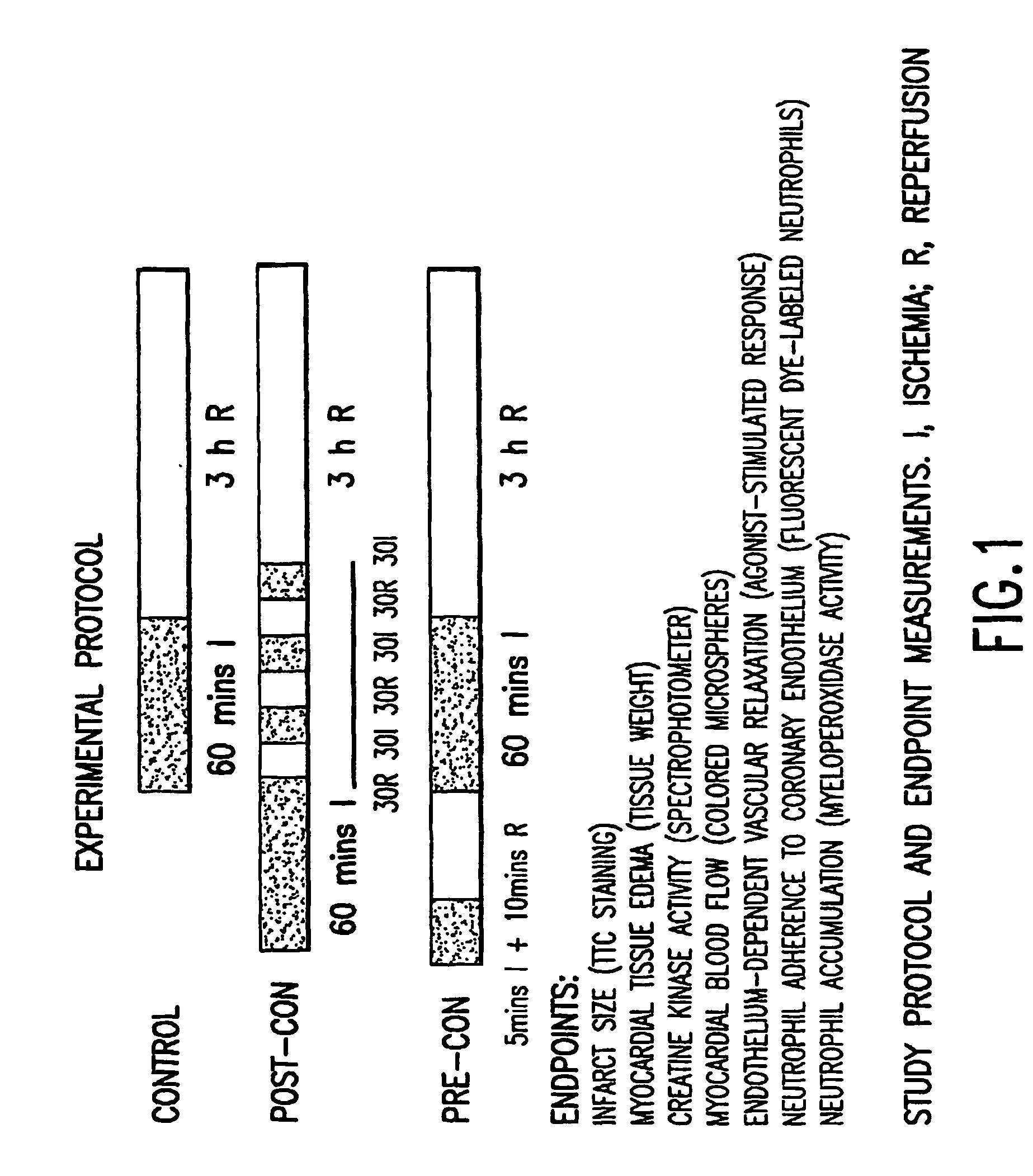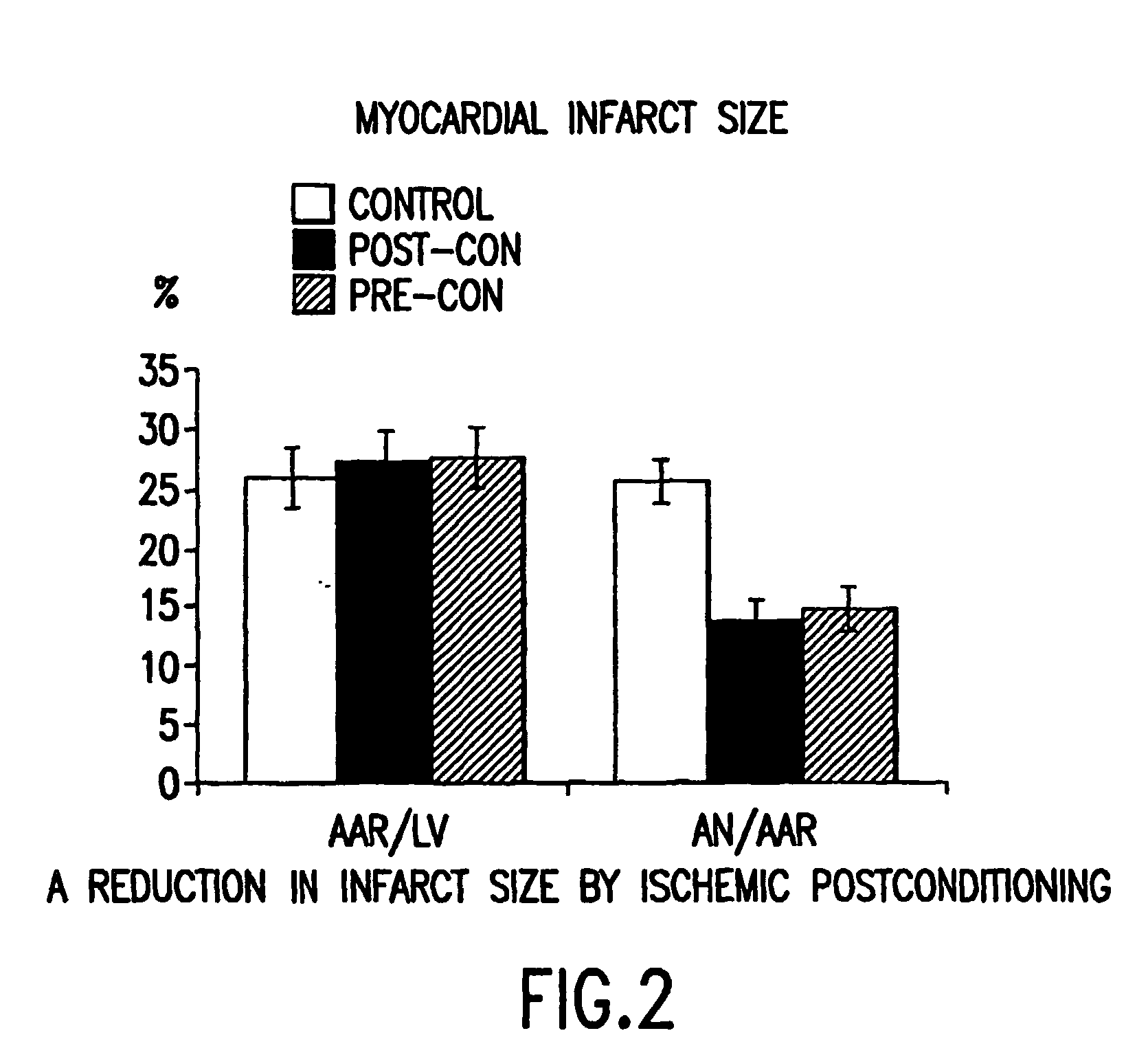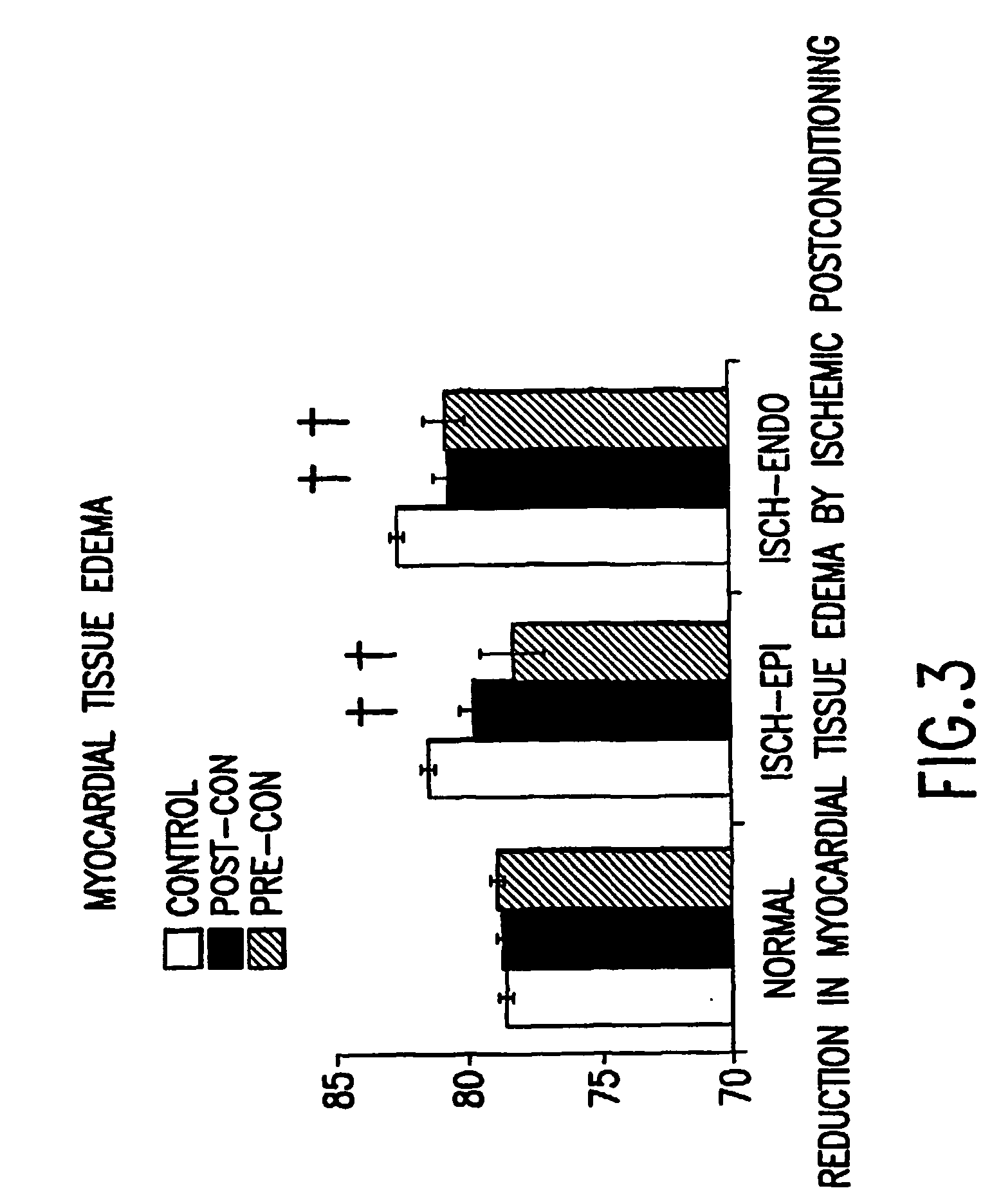Post-conditioning for the reduction of ischemic-reperfusion injury in the heart and other organs
a post-conditioning and post-reperfusion technology, applied in medical science, surgery, medical preparations, etc., can solve the problems of focal necrosis of heart tissue, and affecting the function of the hear
- Summary
- Abstract
- Description
- Claims
- Application Information
AI Technical Summary
Benefits of technology
Problems solved by technology
Method used
Image
Examples
Embodiment Construction
[0044] The concept of post-conditioning was tested in an opened-chest canine model of regional myocardial ischemia and reperfusion. All animals were randomly assigned to one of the following three groups (FIG. 1): 1) Control: the left anterior descending coronary artery (LAD) was reversibly occluded for 60 minutes, and the ischemic myocardium was then reperfused for 3 hours; 2) ischemic post-conditioning (Post-con): after 60 minutes of LAD occlusion, the ischemic myocardium was initially reperfused using 3 cycles of repetitively applied reperfusion followed by ischemia, i.e., 30 seconds of reperfusion followed by 30 seconds of occlusion repeated in 3 successive cycles; 3) ischemic preconditioning (Pre-con): 5 minutes of LAD occlusion and 10 minutes of reperfusion were performed before the 60 minutes of myocardial ischemia.
[0045] FIGS. 1-9 show the salutary effects of post-conditioning on the ischemic / reperfused heart. Those effects include reduction in infarct size measured by a vit...
PUM
 Login to View More
Login to View More Abstract
Description
Claims
Application Information
 Login to View More
Login to View More - R&D
- Intellectual Property
- Life Sciences
- Materials
- Tech Scout
- Unparalleled Data Quality
- Higher Quality Content
- 60% Fewer Hallucinations
Browse by: Latest US Patents, China's latest patents, Technical Efficacy Thesaurus, Application Domain, Technology Topic, Popular Technical Reports.
© 2025 PatSnap. All rights reserved.Legal|Privacy policy|Modern Slavery Act Transparency Statement|Sitemap|About US| Contact US: help@patsnap.com



